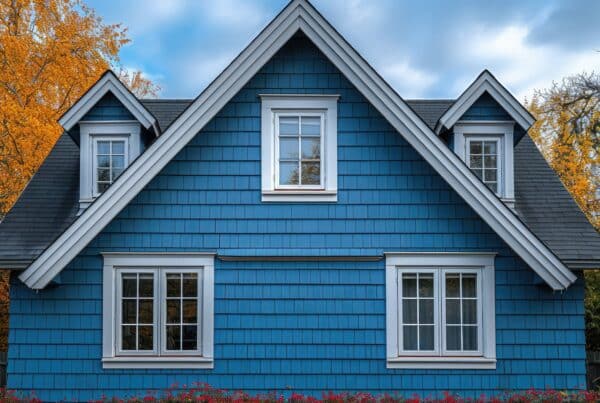
Painting your brick house can sound like a quick and easy way to refresh it, but it’s not always a simple decision. Many are unsure whether it’s safe or smart to paint over brick, and the answer depends on several factors.
Before picking up a paintbrush, it’s important to understand the potential risks, benefits, and long-term impacts. In a moment, we’ll walk through what you need to know, how to paint safely, and when it’s best to consult an expert.
What to Consider Before Painting Brick
Before deciding to paint over brick, it’s essential to consider a few factors.
Brick is a porous material, and its ability to breathe allows moisture to escape. That means painting over it can trap moisture, leading to damage like peeling paint, mold, or brick deterioration.
The climate also plays a role—homes in wetter or humid areas face a higher risk of damage from trapped moisture. Also, the condition of your brick matters—if it’s already cracked or crumbling, paint can make these problems worse.
- Pros: Can look fresh and appealing, enhance a home’s style, or increase resale value when well-maintained.
- Cons: More maintenance, risk of trapped moisture or long-term damage to the brick’s surface.

How to Safely Paint a Brick House
If painting your brick house feels like the best option, following the right steps is essential to ensure a lasting and attractive result.
Start by inspecting the brick surface. Check for cracks, chips, or any signs of wear that may impact the paint’s longevity. At this point, you’ll address any damage, such as filling cracks, before moving forward.
Next, clean the brick thoroughly. Dirt, mildew, and debris can prevent paint from adhering well. Use a gentle cleaning method like a soft brush with mild detergent. Avoid harsh chemicals that might damage the brick. After cleaning, allow the brick to dry completely – this may take up to a few days, depending on the climate.
Make sure to choose a masonry primer designed specifically for brick exteriors. This helps seal the surface so the paint adheres better and reduces the risk of peeling.
Follow with two coats of breathable acrylic latex paint, which allows the brick to release moisture. Make sure each coat is completely dry before applying the next!
Common Mistakes to Avoid
Proper preparation and product selection are crucial when painting brick. Avoid these common mistakes:
- Skipping the Primer: Without it, the paint may peel quickly, or mold growth can appear.
- Using Non-Breathable Paint: Standard exterior paints can trap moisture inside the brick.
- Painting Over Damaged Brick: Ignoring existing issues, like cracks or chips, can lead to further damage.
Maintaining Painted Brick
Keeping a painted brick home in great shape involves regular upkeep. Check your exterior a few times a year for peeling paint, cracks, or signs of moisture.
Early detection of these issues helps you avoid larger, costlier repairs. When it’s time to clean, skip harsh chemicals and use mild soap and a soft brush instead. This helps remove dirt without being aggressive and keeps the brick looking fresh.
Other Recommended Maintenance
Beyond maintaining the paint, you can manage moisture around your home by:
- Regularly check and clear gutters to ensure they direct water away from the house.
- Avoid planting shrubs or trees too close to the foundation to prevent root pressure against the brick.
- Look out for cracks around windows, doors, and the foundation itself. These can indicate movement, which might affect the stability.

When to Call a Professional
If you’re dealing with more serious issues like persistent moisture, significant paint peeling, or cracked and crumbling brick, it’s time to call a professional.
They’ll assess the extent of the damage and identify whether deeper problems—like water seeping through the brick—are at play. They can also determine whether repainting is safe or if repairs or sealing are necessary first.
Conclusion
Painting a brick house can be a rewarding way to refresh its look, but it comes with important considerations.
From evaluating the condition to choosing the right products, every step is vital for a lasting and beautiful finish. For any home that needs expert eyes before sale or renovation in Olympia, WA, and surrounding areas, Boggs Inspection can help.



